Is there any ideal brewing coffee temperature?
One of the most exciting- yet controversial- topics when it comes to understanding coffee brewing is the brew temperature. Many emphasize brew temperature as a key factor affecting the overall quality of your cup of joe. Brew temperature is one factor amongst many- such as extraction time, coffee quality, and water coffee- that affect the resulting flavor of your brewed coffee.
Here is all you need to know about brew temperature and its impact on the quality, texture, or taste of your coffee.
What is the Optimal Brewing Temperature for Coffee?
There is no one optimal temperature for brewing your coffee. When we talk about an optimal brewing temperature we are generally talking about a temperature range. It also depends on the quality of your beans and their roast grade. The dynamic in play is that hotter water will extract quicker. Thus, when considering brewing temperature, you want to keep in mind other variables like brewing method, grind size and extraction time.
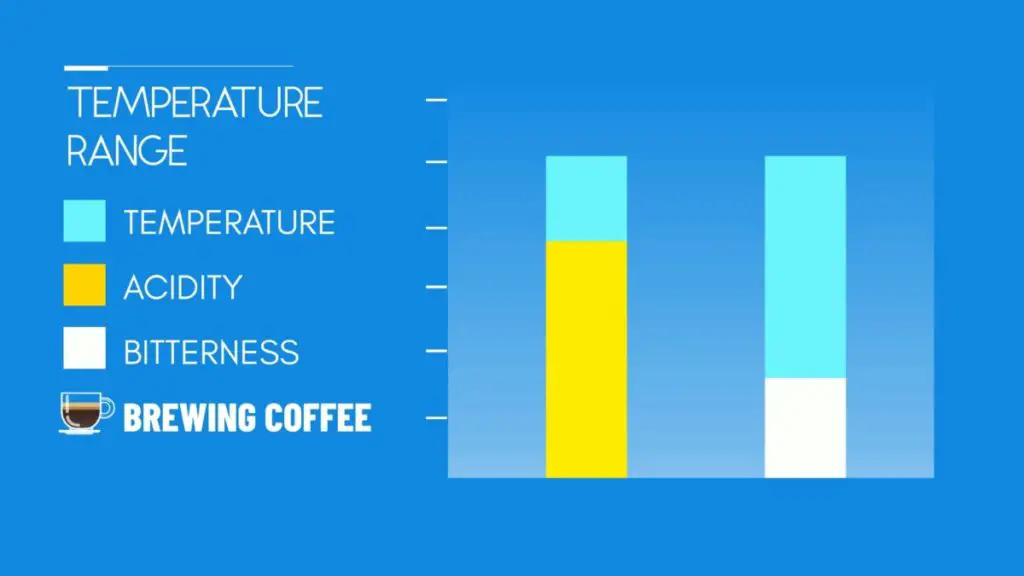
For standard coffee, the general rule baristas will tell you is 96°C (~205 Fahrenheit). However, this guideline is likely around the highest temperature you’d want to use for manual brewing. For pour over, you are likely looking at a range of 90-96°C (195-205 Fahrenheit), using the lower end of that range for darker roasted beans and the upper end of that range for lighter roasted beans. Note that these temperatures are well below water’s boiling point of 100°C (212 Fahrenheit). Aeropress Championship winners’ recipes have used recipes with temperatures ranging anywhere from 80°C to 93°C (176 to 200 Fahrenheit).
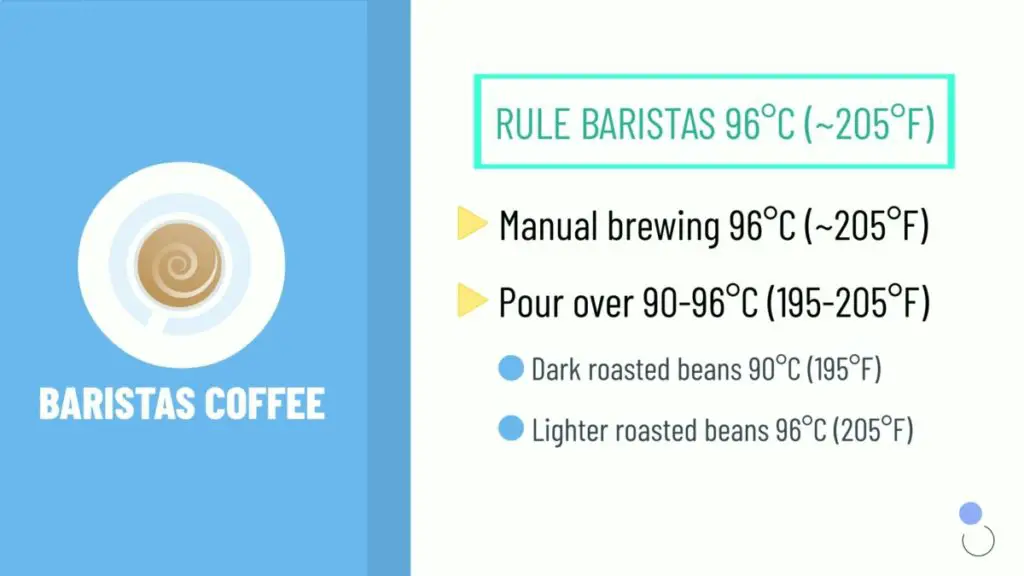
Many electric kettles, like the Cosori, come with a number of setting options allowing for easy and convenient programming of particular temperatures and can be a handy way of dialing in the exact right temperature.
Espresso is a bit more particular. For extra dark roasted espresso beans, a temperature of 86°C to 91°C is preferred. For average roasted espresso beans, a temperature range of 89°C to 93°C works best. For slightly lighter espresso roasts, a temperature range of 91°C to 95°C is appropriate. These brewing temperatures can be a bit harder to achieve than you might initially think- more on that later!
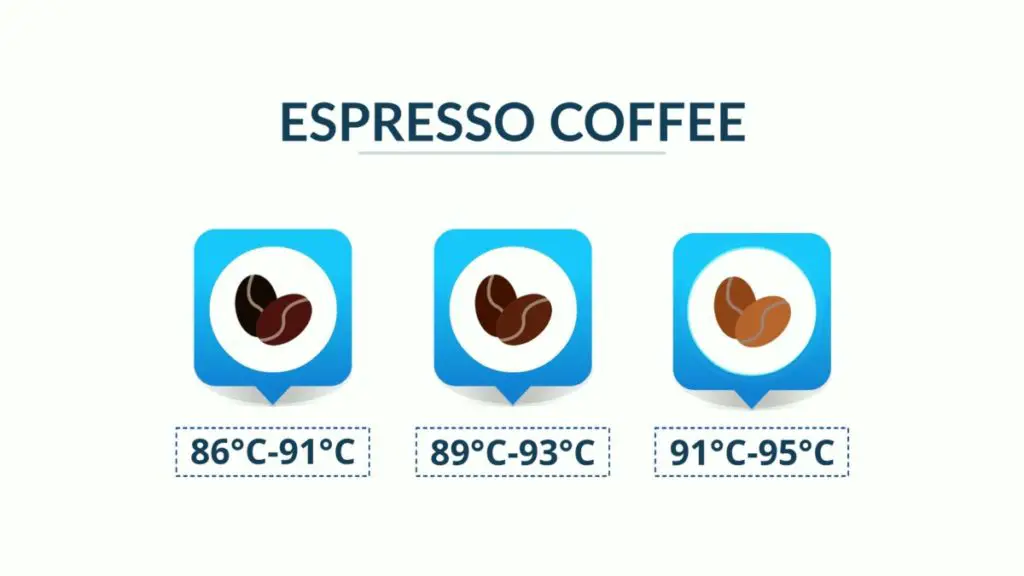
As we noted earlier, in order to extract more from the grounds, you need to raise the brewing temperature. Therefore, overbearing acidity might indicate that you should increase in temperature in order to increase extraction (without changing other variables). Conversely, to reduce the bitterness, you might want to reduce the temperature Generally, you can expect to experience a discernible change in your coffee when you change your temperature- up or down- around 1 degree Celsius (around 2 degrees in Fahrenheit).

People often pose questions regarding altitude as, at higher altitudes, water boils at lower temperatures. If the water boils at 93°C in your place and you are brewing at the same temperature, will you end up with properly extracted coffee?
The answer is that a change in altitude will not alter the taste of your coffee. For normal brewing methods- pour over, Aeropress, etc., the only real problem you could run into is if elevation brings the boiling point lower than your desired brewing temperature. Otherwise, continue to brew at the temperature you normally would.
For espresso, you should continue to brew at your desired temperature as long as external pressure is not impacting the pressure inside the machine. The only catch is when the espresso leaves the brew head, change in pressure can cause a significantly more foamy, creamy, and fluffy texture. However, the flavor of your espresso will come out as delicious as any espresso at lower altitudes.
Advanced Course: Espresso Temperature Surfing and PIDs
Let’s take a brief look back at the history of brew temperature for espresso in particular. Espresso machines heat water using a boiler and force the heated water, under pressure, through coffee at the group head. However, for the resulting espresso shot to be tasty, you’ll need to perform some adjustments to the temperature of your machine.
If you were to let the machine heat up fully and then pull a shot without further adjustment, you’d end up pulling a very burnt tasting shot of espresso. Why? Because the temperature of the water would be much hotter than ideal. Depending on the construction of the machine, you need to find a technique to bring the temperature back down to an appropriate brewing temperature.
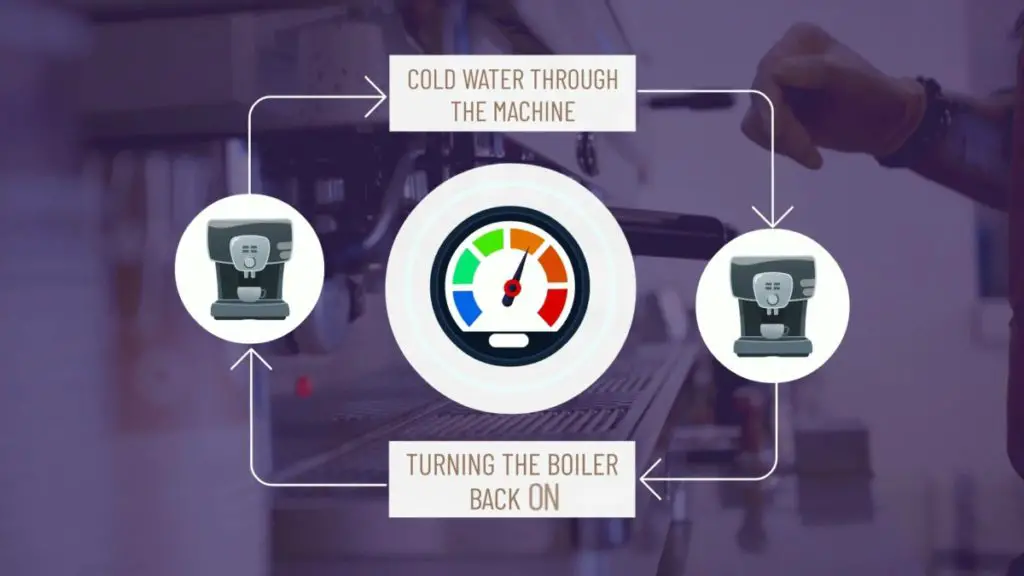
Often, this can involve an iterative process of pulling cold water through the machine and then turning the boiler back on. However, every machine is different. Check information from the manufacturer and online to find a temperature surfing routine that people have already tried and tested for best results.
Even with temperature surfing, inconsistent temperatures at the group head continued to frustrate some enthusiasts, and consistent water brewing temperature became a core concern. This resulted in the development and introduction of PID (Proportional-Integral-Derivative) controllers for espresso brewing.
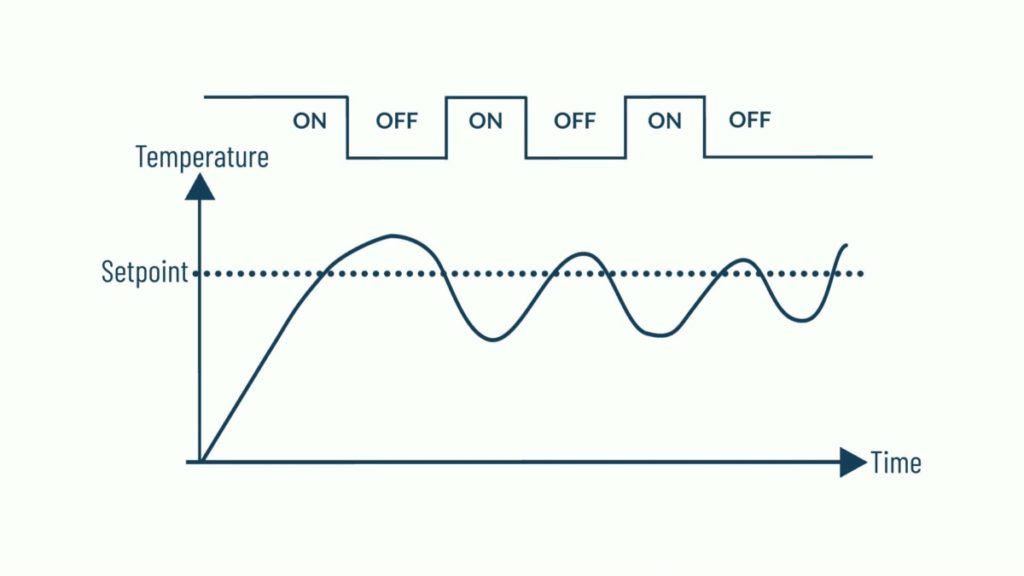
While traditional heating elements merely turn on when the temperature is lower than the desired temperature and off when the desired temperature is reached, the PID controller is able to, in a more sophisticated fashion, determine when the heating element should be switched on and off to achieve a more consistent temperature throughout brewing.
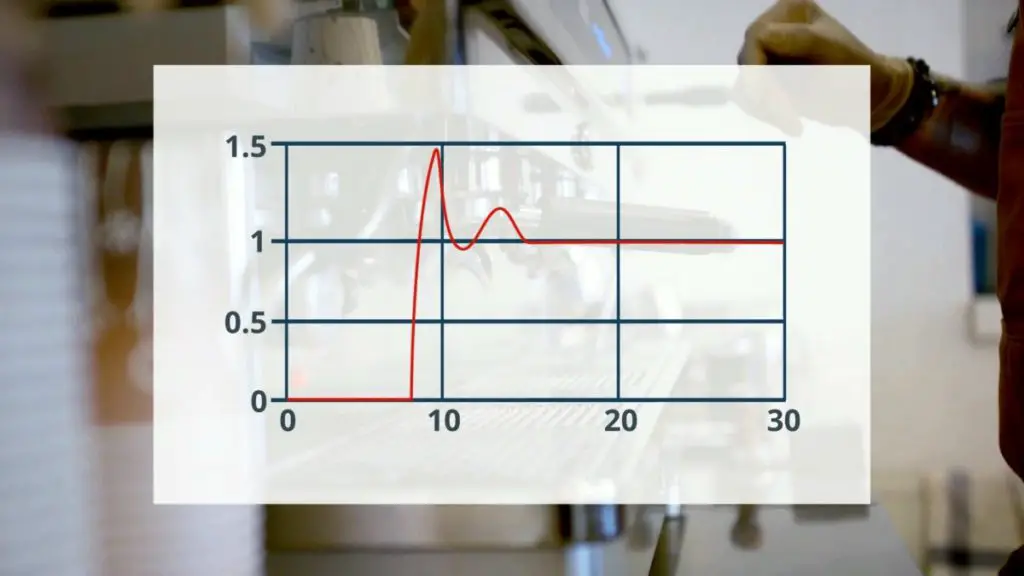
Gradually, this idea migrated into the commercial coffee world. Around the same time (around 1996), David C. Schomer’s book, Espresso Coffee – Professional Techniques, became a driving force behind the early developmental stages of modern espresso. David was a staunch believer in the importance of achieving a flat line brewing temperature. Flat line brewing temperature refers to the aim of achieving brewing water that does not fluctuate in temperature. From the start of your shot to the very end, the temperature should remain constant.
The industry embraced the idea of flat line temperature as it wasn’t very hard to engineer and gave consistent results. All you needed was to check the temperature at the start of the shot and at the end to compare.
Newer espresso machines sometimes allow you to create temperature profiles that allow for adjusting the temperature of the brew boiler and brew head separately. Generally, for darker beans, a searing start and comparatively cooler group head can result in a great espresso. As your hot extraction comes in contact with a cooler mass of metal and moves slowly towards the head this change in temperature profile reduces bitterness.
If you have a machine that can help you develop a temperature curve or profile at various stages of the brewing process, you’ll want to experiment with different profiles to find the desired result.
